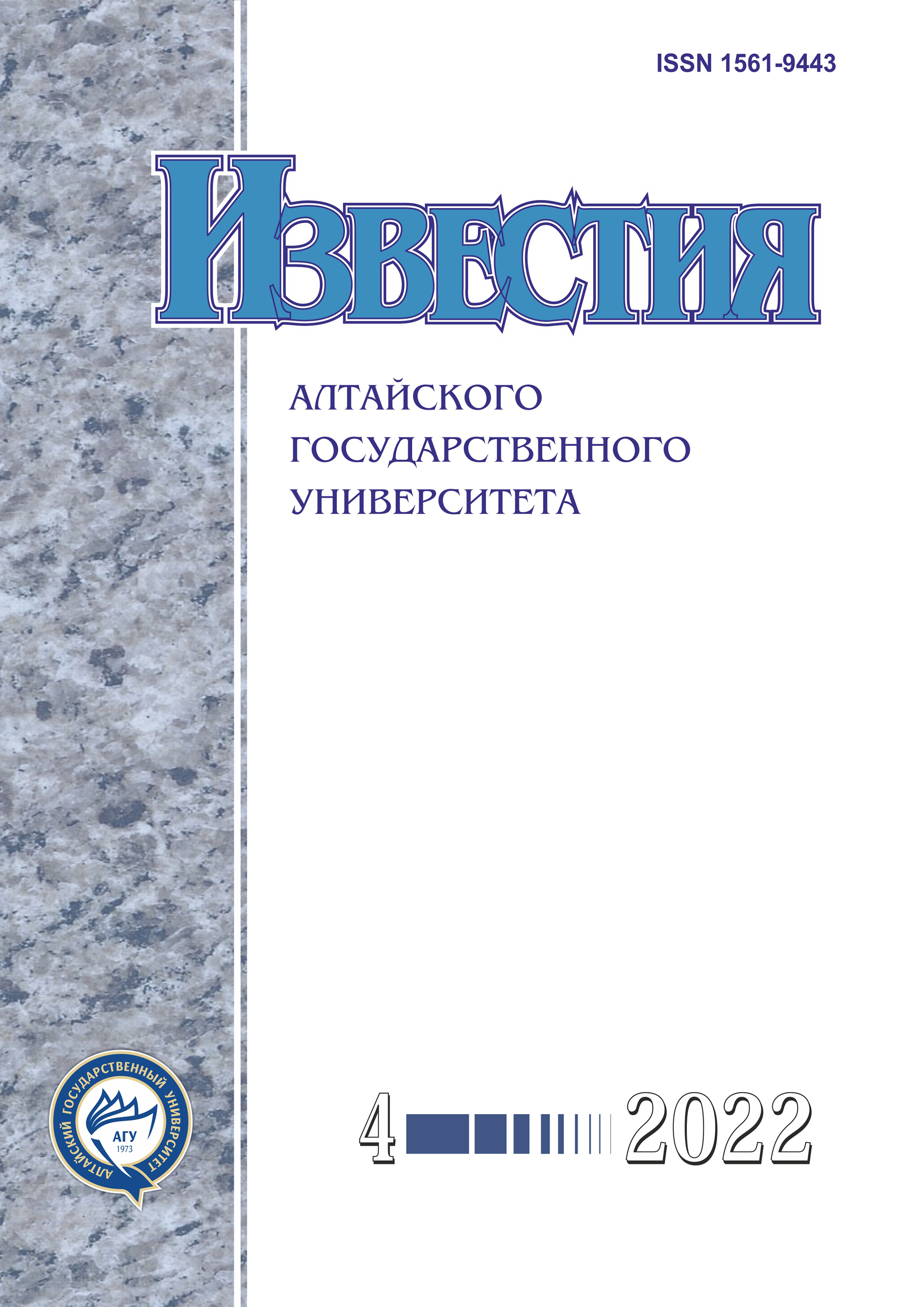Structural-Phenomenological Rheological Model for Engineering Calculations of Polymeric Media Flows
УДК 579.64
Abstract
Studying the behavior of flows of solutions and polymer melts in the field of nonlinear viscoelasticity allows describing the rheological properties in more details and more accurately assess the adequacy of rheological models. A new structural-phenomenological model is proposed to describe the rheological behavior of melts of branched polymers. This model can be recommended for engineering calculations of flows of polymeric media. The model is obtained from the modified Vinogradov-Pokrovsky model which is based on the microstructur-al approach and describes the dynamics of a polymer fluid. Stationary viscometric functions for simple shear and uniaxial tension, as well as stationary shear viscosity, the first-difference coefficient of normal stresses, stationary viscosity at uniaxial tension, are calculated using the obtained model. Also, the influence of model parameters on the form of the functions has been studied. It is shown that the model describes with good accuracy the nonlinear viscoelastic behavior of flowing polymer systems: an anomaly in viscosity, a drop in the coefficient of the first difference of normal stresses, and a nonmonotonic nature of the dependence of the steady-state elongation viscosity on the tensile rate. The viscometric functions data are compared with the experimental data for an industrial polyethylene melt sample.
Downloads
Metrics
References
Борзенко Е.И., Хегай Е.И. Численное моделирование стационарного течения жидкости Балкли-Гершеля в канале с внезапным расширением // Вестник Том. гос. унта. Серия: Математика и механика. 2016. № 39. https://doi. org/10.17223/19988621/39/8.
Pokrovskii V.N. The Mesoscopic Theory of Polymer Dynamics // 2nd Edition, Springer, Berlin, 2010. https://doi. org/10.1007/978-90-481-2231-8.
Малкин А.Я. Исаев А.И. Реология: концепция, методы, приложения / пер. с англ. (Rheology: Concepts, Methods, and Applications). СПб., 2007. https://doi.org/10.1016/C2011-0-04626-4.
Giesekus H.A. Simple constitutive equation for polymer fluids based on the concept of deformation-dependent tensorial mobility // J. Non-Newtonian Fluid Mech. 1982. № 11. https:// doi.org/10.1016/0377-0257(82)85016-7.
Leonov A.I., Prokunin A.N. Analysis of simple con stitutive equations for viscoelastic liquids // J. Non-Newton. Fluid Mech. 1992. № 42. https://doi.org/10.1007/978-94-011-1258-1_3.
Inkson N.J., McLeish T.C.B., Harlen O.G., Groves D.J. Predicting low density polyethylene melt rheology in elon-gational and shear flows with “pom-pom” constitutive equations // J. Rheol. 1999. № 43. https://doi.org/10.1122/1.551036.
Phan-Thien N., Tanner R.I. A new constitutive equation derived from network theory // J. Non-Newtonian Fluid Mech. 1977. № 2. https://doi.org/10.1016/0377-0257(77)80021-9.
Малкин А.Я., Куличихин В.Г. Применение метода высокоамплитудных гармонических воздействий для анализа свойств полимерных материалов в нелинейной области механического поведения // Высокомолекулярные соединения. Серия А. 2014. № 56 (1). https://doi.org/10.7868/ S2308112014010039.
Pivokonsky R., Filip P., Zelenkova J. Two Ways to Examine Differential Constitutive Equations: Initiated on Steady or Initiated on Unsteady (LAOS) Shear Characteristics // Polymers. 2017. № 9. https://doi.org/10.3390/polym9060205.
Maxwell J. C. On the dynamical theory of gases // Trans. Roy. Soc. 1867. № 157. https://doi.org/10.1142/9781848161337_0014.
Oldroyd J.G. On the Formulation of Rheological Equations of State // Proceedings of the Royal Society A: Mathematical, Physical and Engineering Sciences. 1950. № 200. https://doi.org/10.1098/rspa.1950.0035.
Leonov A.I., Prokunin A.N. Nonlinear Phenomena in Flows of Viscoelastic Polymer Fluids // Chapman and Hall. New York, 1994. https://doi.org/10.1007/978-94-011-1258-1.
Pyshnograi G.V., Gusev A.S., Pokrovskii V.N. Constitutive equations for weakly entangled linear polymers // Journal of Non-Newtonian Fluid Mechanics. 2009. № 164 (1-3). https://doi.org/10.1016/j.jnnfm.2009.07.003.
Мерзликина Д.А., Пышнограй Г.В., Пивоконский Р., Филип П. Реологическая модель для описания вискозиме-трических течений расплавов разветвленных полимеров // Инженерно-физический журнал. 2016. № 89 (3). https://doi. org/10.1007/s10891-016-1423-7.
Гусев А.С., Макарова М.А., Пышнограй Г.В. Мезоскопическое уравнение состояния полимерных сред и описание динамических характеристик на его основе // Инженерно-физический журнал. 2005. № 78 (5). https://doi. org/10.1007/s10891-006-0009-1.
Лаас А.А., Пышнограй Г.В., Рудаков Г.О. Исследование реологических свойств наложения и трехмерного течения полимерного расплава в сходящемся канале на основе обобщения модели Максвелла // Механика композиционных материалов и конструкций, сложных и гетерогенных сред. 2021. № 11.
Hertel D., Munstedt H. Dependence of the secondary flow of a low-density polyethylene on processing parameters as investigated by laser-Doppler velocimetry // Journal of Non-Newtonian Fluid Mechanics. 2008. № 153. https://doi. org/10.1016/j.jnnfm.2007.12.004.
Copyright (c) 2022 Александр Андреевич Лаас , Глеб Олегович Рудаков , Григорий Владимирович Пышнограй , Константин Борисович Кошелев

This work is licensed under a Creative Commons Attribution 4.0 International License.
Izvestiya of Altai State University is a golden publisher, as we allow self-archiving, but most importantly we are fully transparent about your rights.
Authors may present and discuss their findings ahead of publication: at biological or scientific conferences, on preprint servers, in public databases, and in blogs, wikis, tweets, and other informal communication channels.
Izvestiya of Altai State University allows authors to deposit manuscripts (currently under review or those for intended submission to Izvestiya of Altai State University) in non-commercial, pre-print servers such as ArXiv.
Authors who publish with this journal agree to the following terms:
- Authors retain copyright and grant the journal right of first publication with the work simultaneously licensed under a Creative Commons Attribution License (CC BY 4.0) that allows others to share the work with an acknowledgement of the work's authorship and initial publication in this journal.
- Authors are able to enter into separate, additional contractual arrangements for the non-exclusive distribution of the journal's published version of the work (e.g., post it to an institutional repository or publish it in a book), with an acknowledgement of its initial publication in this journal.
- Authors are permitted and encouraged to post their work online (e.g., in institutional repositories or on their website) prior to and during the submission process, as it can lead to productive exchanges, as well as earlier and greater citation of published work (See The Effect of Open Access).








